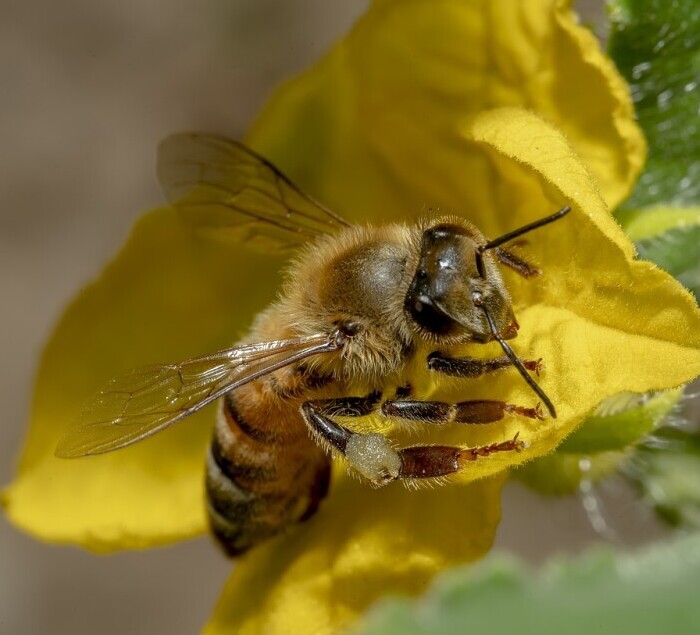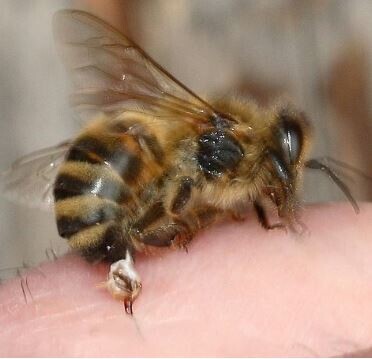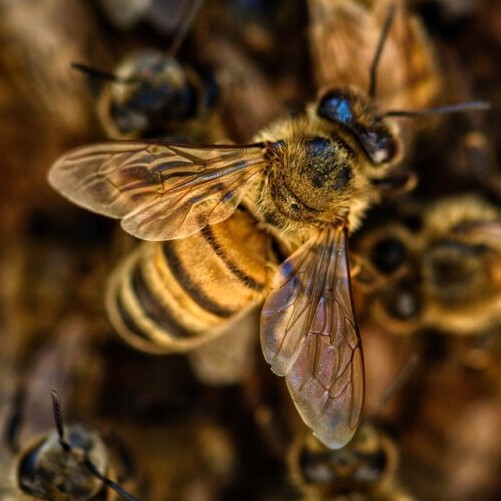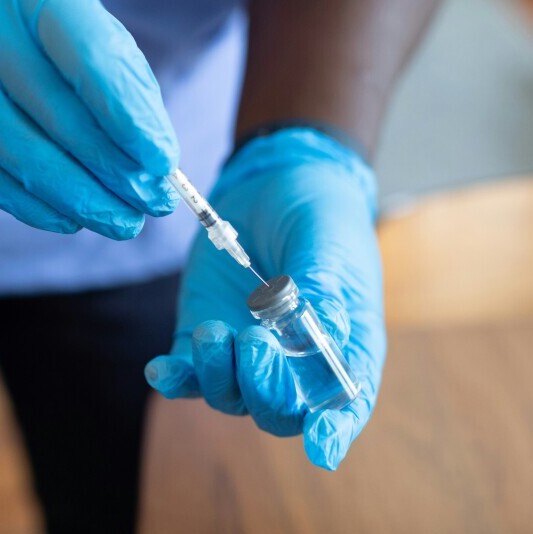Bee venom therapy might sound a bit out there, but it’s got roots stretching way back in history. It’s all about using bee venom for therapeutic purposes, which might seem surprising at first, but it’s a practice that’s woven into traditional medicine across various cultures.
You might be curious about where bee venom therapy actually came from. Well, this practice dates back to ancient times when folks started noticing that bee stings could somehow be more than just painful. They thought maybe there was some healing magic in the sting that could help manage certain ailments.
Over the years, bee venom has been used to target different conditions, particularly those linked to inflammation and pain. There’s quite a bit of chatter about its use for arthritis, nerve pain, and even autoimmune disorders. So, what’s the real buzz around this therapy and what’s driving people to try it? We’ll see if it’s backed by science or just another winged myth.
How Bee Venom Therapy Works
Bee venom therapy operates on some pretty intriguing science, tapping into the complex chemistry of bee venom. Picture this: a venom cocktail featuring melittin, a compound known to have anti-inflammatory and pain-relieving properties. That’s just the tip of the iceberg, though, as bee venom also contains enzymes, peptides, and amino acids that can interact with the body in unique ways.
Let’s break it down a bit further. When bee venom enters the body, it triggers a series of responses from the immune system. This might sound alarming, but these responses can potentially moderate inflammation and help the body manage pain, kind of like a natural response hack. The idea is that in controlled doses, this could lead to therapeutic effects.

It’s wild how this all works, isn’t it? Scientists believe that bee venom might help stimulate the immune system into a healing mode, though research is still ongoing to figure out all the hows and whys. Bee venom’s potential to boost circulation and get the body to release certain hormones adds to the benefits some people experience.
For those jumping into bee venom therapy, understanding these mechanisms is key. It’s not just about getting stung; it’s about a controlled application that works synergistically with the body’s natural processes. And of course, having a medical professional who knows what they’re doing makes all the difference in safely exploring what this therapy might offer.
Exploring the Health Benefits
Bee venom therapy has been turning heads with its potential to fight inflammation. For people dealing with arthritis, this could be a game-changer. Some studies suggest that melittin, a component of bee venom, might reduce swelling and inflammatory markers. That’s good news for those fed up with stiffness and joint pain.
Pain management is another big promise of bee venom therapy. Imagine finding relief from chronic pain conditions without popping pills every few hours. By interacting with the nervous system, the venom might alter pain signals, providing some much-needed relief. It’s a natural alternative that might stand up against those hefty pharmaceutical options.

But what about the immune system debates swirling around? Bee venom is often touted as an immunity booster, potentially helping the body fend off illnesses. While that sounds dreamy, it’s vital to remember that while some folks report improvements, hardcore scientific backing is still in development. The therapy’s influence here might vary from person to person.
So, if you’re considering bee venom as a part of your wellness toolkit, get a solid grasp on these proposed benefits. Dive into research, talk to experts, and weigh your own risks and needs. Being informed will help you decide if this buzz-worthy therapy is right for you.
Potential Risks and Adverse Effects
While bee venom therapy is intriguing, it’s not without its share of risks. One of the most critical concerns is allergic reactions. For some, a bee sting can cause severe allergic responses, ranging from mild itching to something as serious as anaphylaxis. It’s vital to undergo this therapy under strict medical supervision, especially for those unaware of their potential allergies.

Apart from allergies, there are other possible side effects to watch out for. Some folks might experience swelling, redness, or pain at the application site. These may sound minor, but they can be uncomfortable and sometimes alarming if you’re unsure what’s normal.
Then there’s the long-term view. Promoters of bee venom therapy suggest its benefits, but how it impacts the body over time is still under the microscope. If you’re thinking about diving in, be sure to weigh these factors against the potential upsides you’ve heard about.
It’s also important to know that this therapy isn’t for everyone. People with certain medical conditions, like autoimmune diseases or specific heart problems, might need to steer clear. Always consult a healthcare provider who knows your medical history before going ahead with bee venom therapy.
Current Research and Clinical Trials
Bee venom therapy is a hot topic in the research world. Recent studies have been exploring its potential benefits and risks, trying to pin down what actually works and what doesn’t. Some trials investigate its effectiveness in managing chronic pain, while others focus on inflammatory conditions like arthritis.
The challenges researchers face are pretty significant. Bee venom’s complex chemistry requires careful study, and the varying responses among individuals add another layer of complexity. Not all results are consistent, which makes figuring out solid conclusions a bit tricky.
Despite these hurdles, the scientific community is pushing forward. New methods of extracting and administering bee venom are being tested, aimed at maximizing therapeutic benefits while minimizing risks. The goal is to develop a clearer picture of how bee venom interacts with the human body.

Upcoming research is promising, with studies looking at its potential applications in wider medical fields. From immunology to neurology, researchers are curious to see if bee venom can offer more than it’s currently credited for.
Staying updated with the latest research findings is crucial if you’re considering bee venom therapy. It’s also wise to discuss these studies with a healthcare professional to understand what emerging insights could mean for your health decisions.
Conclusion and Considerations for the Future
Bee venom therapy holds potential, but it’s essential to weigh both the pros and cons before jumping in. The potential benefits – like its anti-inflammatory and pain-relieving properties – can be appealing for those looking for alternatives to conventional treatments. However, understanding the risks, especially allergic reactions and side effects, is a big part of making an informed choice.
The future of bee venom therapy could see it becoming more mainstream, provided new clinical evidence continues to shed light on its mechanisms and benefits. As research progresses, there might be more targeted applications, improved safety measures, and enhanced administration methods that make this therapy accessible to a broader audience.
If you’re intrigued by what bee venom might offer, it’s crucial to find a qualified practitioner who understands the nuances of this therapy.

A professional who’s well-versed in both its benefits and pitfalls can guide you through the process safely, ensuring that your health remains the priority.
Staying informed and cautious is the way forward. Whether you’re considering this therapy for its potential health benefits or simply exploring new ventures in alternative medicine, being knowledgeable will help you make the best decisions for your wellness journey.

2 comments on “Bee Venom Therapy: Potential Benefits And Risks”
Shaun
November 12, 2024 at 7:09 amI find Bee Venom Therapy is fascinating, offering both potential health benefits and important risks to consider. I’ve been intrigued by how this therapy is used for conditions like arthritis and multiple sclerosis due to its anti-inflammatory properties. Bee venom contains compounds like melittin, which has shown potential in reducing inflammation and even managing pain. However, it’s not a treatment to be taken lightly—there’s a real risk of allergic reactions, and in some cases, severe side effects. It’s essential to consult with a qualified practitioner and weigh the risks carefully. The natural power of bee venom is intriguing, but understanding both sides is key for anyone exploring this therapy.
Randi
November 12, 2024 at 3:49 pmThanks for sharing your thoughts! Bee venom therapy really is intriguing—it’s amazing how something so natural can have such complex effects, especially for conditions like arthritis. Consulting a qualified practitioner is definitely the way to go. Appreciate your response.